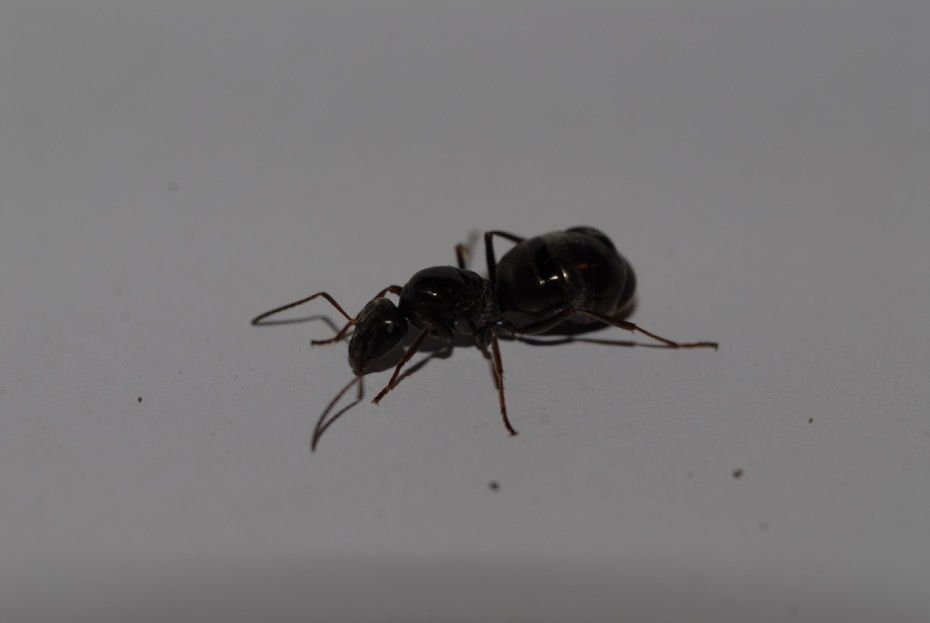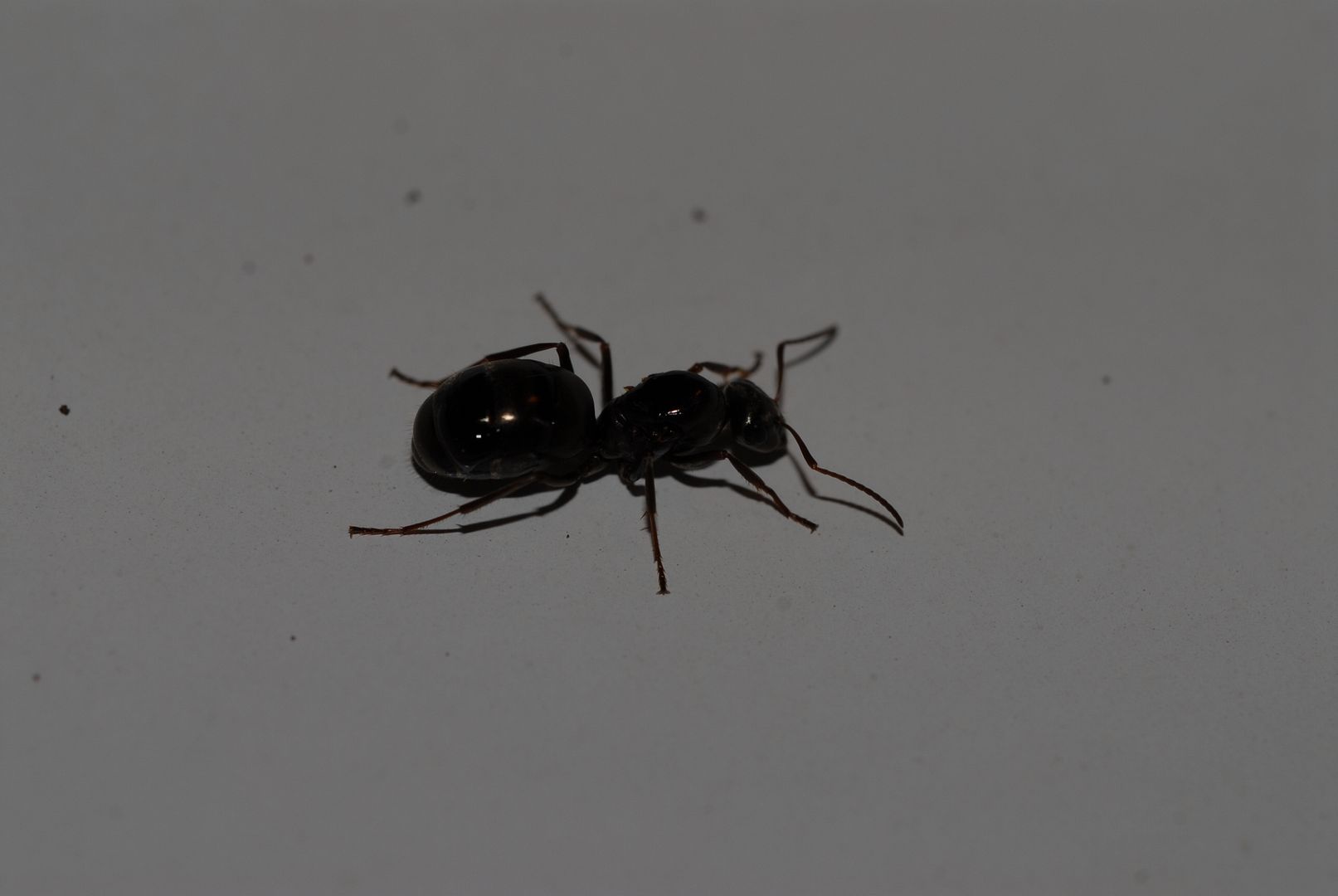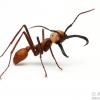1. Location of collection: Lynnwood area of Washington, USA.
2. Date of collection: September 5, 2016
3. Habitat of collection: found under a stone in the dirt. The stone was the type that people make their handprints in. Possibly plaster but unsure.
4. Length: 7-8 mm.
5. Coloration: shiny black with lighter legs and antennae.
6. Distinguishing characteristics: almond shaped eyes, but I couldn’t see any nodes. But sometimes they are hard for me to see. I’m also trying to ignore her so she will lay eggs asap. I counted 11 antennal segments. She also has some fine hairs on her gaster.
7. Anything else distinctive: jumpy when she sees me.
8. Nest description: A neighbor found her under the plaster rock in dirt.
9 . Post the clearest pictures possible of the top, side, and face of the ant in question, and if possible, their nest and the habitat they were collected in.
Thanks A lot!

















